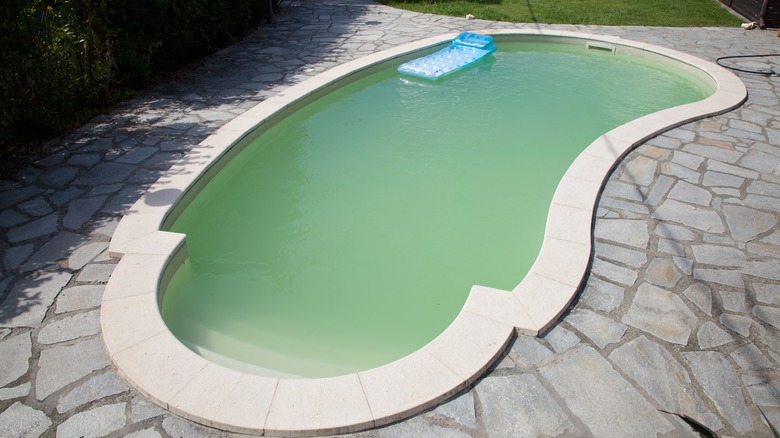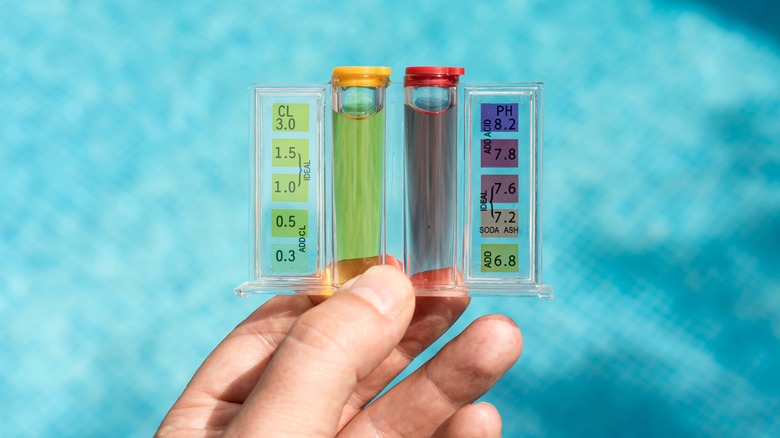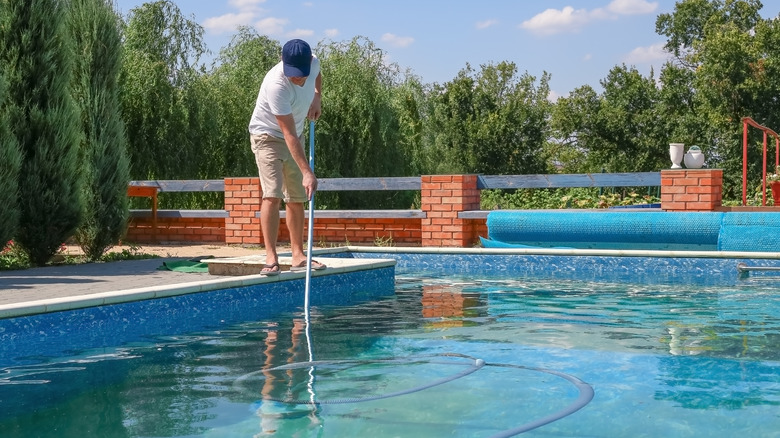Why Your Pool Is Cloudy And How To Get It Looking Crystal Clear
Nothing will ruin a pool party faster than dubious-looking green water, which can be chalked up mainly to poor filtration. However, unbalanced chemical levels can also play a role. When the pH or chlorine levels are not properly maintained, it creates an environment that encourages algae growth and gives your pool that unpleasant swampy appearance.
Cloudy pool water can be caused by a number of things, including a clogged filter, debris in the skimmer or pump basket, worn-out filter media, insufficient filtration time, or aging pump and filter equipment, so you'll also want to make sure that the water is properly flowing through all areas of the pool. Cleaning or replacing the filter, clearing all the organic floating stuff, or replacing equipment may be necessary to resolve the issue.
Inadequate cleaning can also contribute to cloudy water, so be sure to regularly skim the pool surface to remove leaves and other things that can fall in. Vacuum the pool to eliminate any settled debris on the bottom, and brush the walls and all underwater surfaces to dislodge anything that might be growing on or in the water. It's always important to practice proper maintenance because your pool isn't going to clean itself.
It could be a chemical issue
One common reason for cloudy pool water is an imbalance in chemicals, like low chlorine, high pH levels, or excessive alkalinity. These conditions can promote bacterial growth and lead to that unappealing green, murky water. To address this, you'll want to test the pool water to identify what exactly is the cause. For high or low pH levels, you'll just have to make the appropriate chemical adjustments. Proper pool chemistry should have pH levels hovering between 7.4 and 7.6, with an alkalinity between 100 and 150 parts per million (ppm).
If the chlorine levels are low, then you can simply add more tablets. Alternatively, you can do a shock treatment, also called super chlorination. This is done by adding a high dose of chlorine or other oxidizing agents into the water, which rapidly raises the chlorine level in the pool and eliminates any organic contaminant that may be present. You'll have to run your pool for two to three days for this to be effective. In a pinch, you can also use baking soda to fix any alkalinity issues.
Your pool could be coming to life
Algae is the second reason why your pool may be a dubious color. If your chemical levels are off, this can make your pool a haven for algae and other water-loving bugs. In addition to maintaining proper chlorine levels, you'll also want to brush the pool walls and bottom to loosen any visible algae. Another thing you'll want to observe is the color of the water as different colors of algae have corresponding algaecides, which can be added with a water clarifier to help clear everything up.
Once you've added the required treatments to the pool, allow it to run for at least two days, and make sure that you regularly backwash your filter. This involves reversing the water flow to clean out debris and contaminants and is essential in keeping your filter operating in tip-top shape. Unfortunately, algae will keep coming back unless it's completely eradicated. So if your pool still looks green after a week of treatment, you'll need to collect a water sample and bring it to your local pool store, so they can do an analysis and help you decide what to do next.


